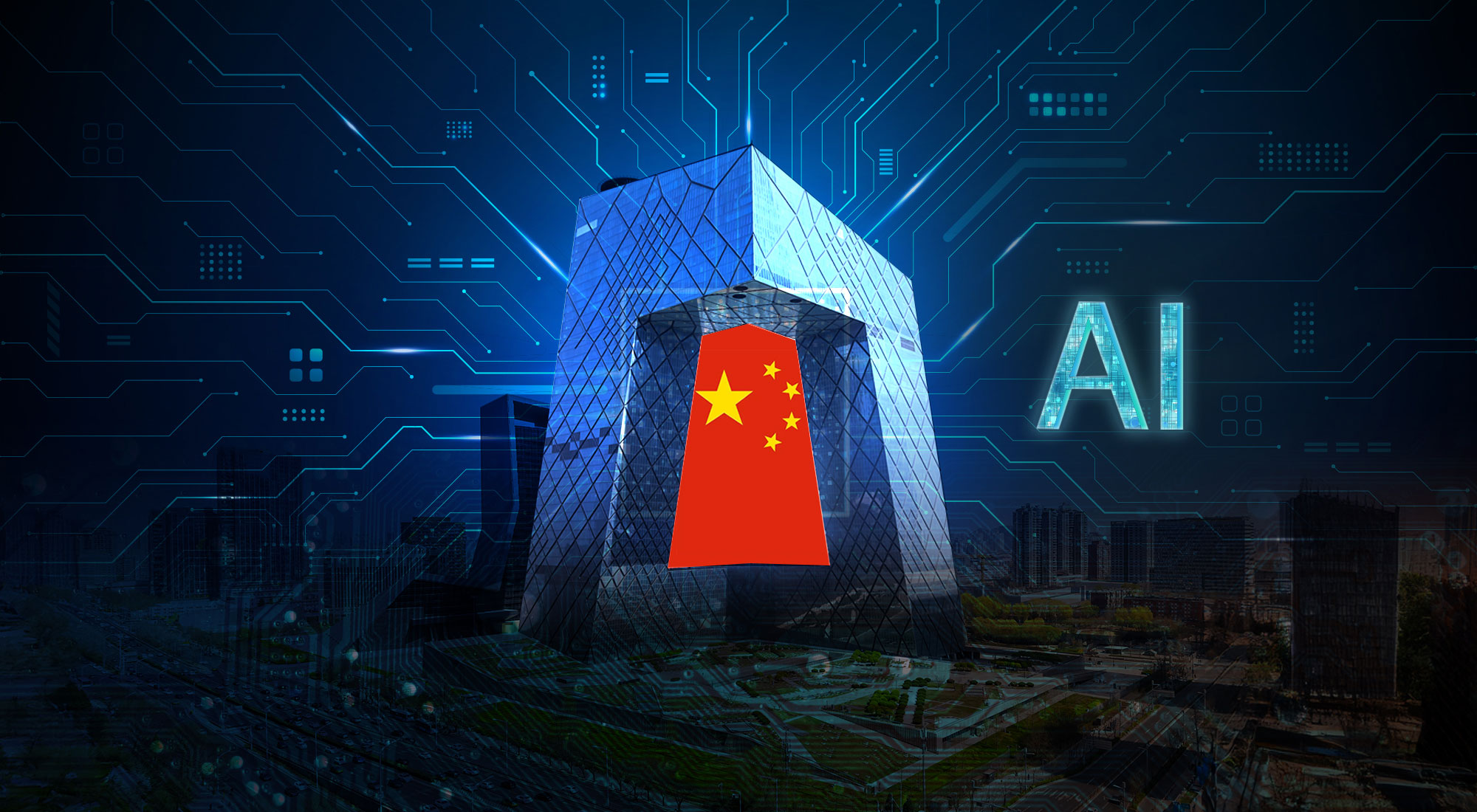In recent years, China has emerged as a formidable force in the realm of artificial intelligence (AI), driven by a strategic vision that aims to position the country as the global leader in AI innovation by the year 2030. This ambition is outlined in key policy frameworks such as the Next-Generation AI Development Plan (2017) and the Made in China 2025 initiative, both of which underscore the importance of AI self-sufficiency, the establishment of innovation hubs, and the integration of AI technologies across various sectors, including surveillance, healthcare, and smart cities. Central to this transformative agenda is the development of indigenous AI models, notably DeepSeek, which not only challenge the dominance of Western counterparts like OpenAI’s ChatGPT but also offer cost-effective and scalable solutions tailored for diverse applications. As China leverages initiatives like the Digital Silk Road (DSR) to export its AI technologies and governance models, it is simultaneously reshaping AI standards and practices in developing economies, thus amplifying its influence on the global technology landscape. However, this expansive vision is not without its challenges; the imposition of U.S.-led semiconductor restrictions poses significant hurdles for China’s ambitions, potentially stalling progress in its AI sector. This insight explores the intricacies of China’s AI strategy, exploring its policy framework, the implications of its homegrown AI models, and the challenges it faces, while also considering the broader global ramifications of China’s approach to AI governance and innovation.
China’s AI Policy Framework
What are the key components of the Next-Generation AI Development Plan (2017)?
A fundamental aspect of the Next-Generation AI Development Plan (2017) is its strategic focus on promoting innovation and entrepreneurship, primarily through the establishment of entrepreneurial bases.[1] These bases serve as hubs where entrepreneurial endeavors can flourish, significantly contributing to the overall ecosystem of AI development. Complementing this is the emphasis on digital financial inclusion, which plays a crucial role in meeting the capital needs of entrepreneurs. By integrating AI into financial inclusion scenarios, the plan not only enhances user convenience but also broadens the scope and accessibility of financial services.[2] This integration is further facilitated by the proliferation of mobile payments and consumer loans, which are essential components in the digitalization process.[3] Such financial innovations ensure that entrepreneurs have the necessary resources to develop and implement AI technologies, thereby fostering a cycle of continuous innovation and development. Consequently, the plan underscores the necessity for robust financial frameworks that support entrepreneurial ventures and enable the practical application of AI advancements.[4]
How does “Made in China 2025” aim to achieve AI self-sufficiency?
Building on the foundations laid by the Next-Generation AI Development Plan, “Made in China 2025” targets AI self-sufficiency by emphasizing indigenous innovation and technological independence. This initiative is integral to China’s broader ambition of becoming a science and technology superpower by 2049, with AI playing a pivotal role in this transformation.[5] By focusing on upgrading China’s manufacturing capabilities through the integration of information technology, the program aims to not only enhance productivity but also increase the indigenous content in higher-end technology products.[6] This shift toward self-reliance is particularly crucial in the context of AI, where dependency on foreign technology could hinder China’s strategic goals. Therefore, “Made in China 2025” also aims to diminish reliance on foreign inputs, ensuring that China can independently develop and control critical AI technologies.[7] Achieving AI self-sufficiency is essential for positioning China as a global leader in the critical technologies of the future, aligning with the initiative’s overarching objective to secure a dominant position in the global tech landscape.[8] Such strategic autonomy in AI not only fortifies China’s economic resilience but also amplifies its influence on the world stage.
What role do innovation hubs play in China’s AI strategy?
Innovation hubs in China play a pivotal role in advancing the nation’s AI strategy by serving as epicenters for technological development and collaboration, as highlighted by the government’s strategic initiatives. These hubs are integral to fostering a competitive environment that attracts both domestic and international talents and investments, particularly in areas such as AI, big data analytics, and gene editing. The Chinese government has encouraged the development of innovation capabilities within these strategic projects, which aligns with the broader national strategy to enhance self-sufficiency and reduce dependency on foreign technology inputs.[9] Moreover, the strategic planning and specific characteristics of these hubs contribute significantly to driving innovation across various sectors, including health sciences, which underscores their impact on the broader AI landscape in China.[10] With China’s dual-track AI regulation strategy, these hubs also play a crucial role in policy innovation and maintaining competitiveness within the global AI industry.[11] To ensure the sustained growth and success of these innovation hubs, it is imperative that China continue to support them through favorable policies and investment, thereby solidifying its position as a leader in AI technology.
Applications and Impact of Chinese AI Models
How do Chinese AI models like DeepSeek provide alternatives to Western models?
DeepSeek, a rising AI startup from China, is emerging as a formidable competitor to Western giants like OpenAI, Anthropic, and Meta, offering innovative AI models that challenge the status quo of AI development. One of the core aspects where DeepSeek diverges from its Western counterparts is its focus on cost-effective operations, potentially offering AI solutions at a fraction of the cost of traditional Western models. This affordability is largely attributed to DeepSeek’s leaner training methodologies, which prioritize efficiency and smart architectural designs over the brute-force hardware scaling commonly seen in Western approaches.[12] Consequently, DeepSeek’s emphasis on efficiency and smarter architectures not only positions it as a viable alternative but also raises critical discussions about the overall efficiency of AI progress and the potential risks associated with such lean operational models.[13] As DeepSeek continues to gain traction, it challenges the AI field to reconsider the traditional paradigms of AI development costs and efficiency, prompting a broader evaluation of whether the high expenses in AI have been overstated or necessary.[14] Such a shift could lead to significant changes in the global AI landscape, necessitating careful consideration of the implications for innovation, market dynamics, and ethical AI deployment.
In what ways are AI applications being expanded in surveillance and healthcare?
The expansion of AI applications in healthcare and surveillance demonstrates a transformative shift toward more personalized and efficient systems. In healthcare, AI leverages mobile health technologies to enhance healthcare delivery, employing advanced algorithms to provide tailored therapy and improve patient outcomes.[15] Technologies such as wearable interfaces enable continuous monitoring of individuals, offering real-time data collection and analysis that can detect subtle health changes, thus facilitating early intervention and reducing long-term healthcare costs.[16] AI also plays a critical role in interpreting medical imaging, with capabilities that match or even surpass human radiologists, as seen in the detection of anomalies in X-rays and CT scans.[17]
Furthermore, AI’s predictive modeling is crucial in identifying at-risk populations, optimizing healthcare delivery by improving staffing levels and patient flow, thereby reducing wait times and hospital stays.[18] However, the integration of AI in healthcare must address challenges related to data protection and interoperability to ensure seamless and secure operations.[19] The potential to save the U.S. healthcare economy underscores the importance of continued investment and development in AI technologies.[20] As AI applications evolve, their ability to provide remote monitoring through telehealth and facilitate early detection of health issues further exemplifies their value in modern healthcare systems.[21] It is imperative to focus on building robust technological infrastructure and ensuring human supervision to maximize the effectiveness of AI interventions and realize its full potential in improving public health outcomes.[22]
What is the significance of the Digital Silk Road (DSR) in exporting AI technologies?
The DSR Initiative plays a pivotal role in exporting AI technologies, which prominently intersects with China’s strategic ambitions as outlined in “Made in China 2025.” This initiative not only seeks to elevate China’s technological self-sufficiency but also aims to enhance global supply chains through the integration of AI and Big Data.[23] By doing so, the DSR facilitates a dual advantage: bolstering commercial applications and potentially supporting military objectives, as the export of AI technologies could serve multiple strategic interests.[24] The strategic export of such technologies under the DSR is further underscored by patent data analyses, which reveal AI and Big Data’s critical roles in shaping the future of supply chains.[25] This highlights the interconnectedness of economic and strategic domains, where advancements in AI can lead to significant commercial and geopolitical gains. As these technologies continue to permeate global markets, it becomes essential for stakeholders to recognize the multifaceted impacts of the DSR, necessitating careful navigation of its implications for international trade and security.
Challenges and Global Implications of China’s AI Ambitions
What obstacles does China face due to U.S.-led semiconductor restrictions?
One of the primary obstacles China faces due to U.S.-led semiconductor restrictions is the strategic disadvantage in developing advanced semiconductor capabilities crucial for its military and technological ambitions. The Biden administration’s measures have explicitly targeted China’s access to cutting-edge technologies in semiconductor design and manufacturing, which are vital for advancing both civilian and military applications.[26] This strategic hindrance is compounded by the U.S.’ cooperation with allied firms and governments to enforce these restrictions, making it increasingly challenging for China to circumvent the limitations and maintain a competitive edge in the global semiconductor market.[27] The restrictions have not only impeded China’s technological progress but have also been part of a broader strategy that intertwines economic and national security concerns, further complicating China’s path to self-sufficiency in this critical sector.[28] As a result, these constraints place Chinese firms at a competitive disadvantage, particularly in critical segments like logic and NAND memory chips, where global leaders continue to advance while Chinese manufacturers struggle to keep pace.[29] Therefore, addressing these multifaceted challenges requires China to enhance its domestic capabilities and seek alternative strategies to mitigate the impact of these restrictive measures on its technological and military objectives.
How is China reshaping AI standards in developing economies?
China’s reshaping of AI standards in developing economies is significantly influenced by its comprehensive approach to AI governance, which emphasizes a balance between innovation and social stability.[30] This model is particularly attractive to developing nations that seek to harness AI’s economic potential while maintaining societal order. The integration of robust state investment in AI infrastructure, alongside strict content-control mechanisms, showcases China’s ambition for global leadership in AI among these economies.[31] Through initiatives such as the Belt and Road Initiative (BRI), China coordinates standardization efforts that are likely to influence AI standards in these regions.[32] This dual-track approach not only involves international cooperation but also promotes China’s own standards through bilateral cooperation and investment projects.[33] As developing economies look to replicate China’s success, they may adopt similar strategies, potentially aligning their AI standards with China’s. This alignment could lead to increased economic growth and technological advancement in these regions, but it also necessitates careful monitoring to ensure that such developments do not compromise privacy rights and civil liberties.[34] Therefore, while China’s influence offers substantial opportunities for developing economies, a balanced approach that considers ethical implications and respects local contexts is essential for sustainable AI integration.
What are the potential global impacts of China’s AI governance models?
China’s AI governance models are poised to have profound global impacts, particularly through their emphasis on safety and ethics in AI governance, as outlined in China’s human-centered AI development strategy.[35] This approach aligns with the broader objectives of international cooperation, as highlighted in the Shanghai Declaration on Global AI Governance, which underscores the necessity of collaborative efforts to harness AI’s potential for humanity’s benefit.[36] However, China’s pioneering Provisional Administrative Measures of Generative AI Services, as the first regulation of its kind, could set a precedent and potentially influence international AI policy discussions. This pioneering status invites other nations to examine and potentially adopt similar regulations, thereby shaping global AI governance frameworks.[37] While these measures may promote a globally unified approach to AI governance, they also risk creating ambiguities in accountability across the AI value chain, potentially undermining the effectiveness of AI services worldwide. Therefore, as China continues to position itself as a key player in AI governance, it is crucial for international stakeholders to engage proactively with China’s models, ensuring that global AI governance evolves in a manner that is both inclusive and effective.
In examining China’s AI strategy through the lens of its key initiatives, such as the Next-Generation AI Development Plan and “Made in China 2025”, it becomes evident that the country’s approach is not only aimed at technological advancement but also at establishing a robust framework for innovation and self-sufficiency. The establishment of innovation hubs is particularly noteworthy, as these centers foster collaboration, attract talent, and facilitate investment, thereby driving advancements across critical sectors like healthcare. However, the success of these hubs is contingent upon addressing inherent challenges, particularly those related to data protection and interoperability, which are crucial for realizing the full potential of AI in improving patient outcomes. The DSR Initiative further underscores China’s ambition to export its AI technologies, revealing the multifaceted nature of its strategic goals that intertwine economic growth with military considerations. Yet, the obstacles posed by U.S.-led semiconductor restrictions highlight a significant vulnerability in China’s strategy, suggesting that while ambitious, the path to becoming a global leader in AI is fraught with geopolitical challenges. Moreover, China’s governance model, which emphasizes stability alongside innovation, presents both opportunities and ethical dilemmas for developing economies that may adopt similar frameworks.
This raises important questions about the balance between harnessing AI for economic growth and ensuring ethical standards, a discourse that is becoming increasingly relevant as China’s influence in global AI governance expands. The Provisional Administrative Measures of Generative AI Services could serve as a pivotal reference point for international regulatory discussions, yet they also invoke concerns regarding accountability and the ethical implications of AI deployment. Thus, while China’s AI strategy positions the country as a formidable player on the global stage, it simultaneously necessitates a critical examination of ethical frameworks and international collaboration to foster a balanced and inclusive approach to AI governance. Future research should delve into the implications of China’s AI policies on global standards, the potential for regulatory harmonization, and the ethical challenges that arise from the integration of AI into various sectors, thereby contributing to a more nuanced understanding of the global AI landscape.
[1] Aili Zhang and Xinyu Sun, “Analysis on the Next Generation of Artificial Intelligence Development Plan and Digital Financial Inclusion: Evidence from China,” Journal of Applied Finance & Banking 12, no. 6 (2022), www.scienpress.com/Upload/JAFB/Vol%2012_6_1.pdf., retrieved February 18, 2025.
[2] Ibid.
[3] Ibid.
[4] Ibid.
[5] Bates Gill, “China’s quest for greater technological self-reliance,” Melbourne Asia Review, March 22, 2021, https://www.melbourneasiareview.edu.au/chinas-quest-for-greater-technological-self-reliance/?print=pdf., retrieved February 18, 2025.
[6] Ibid.
[7] Ibid.
[8] Ibid.
[9] Marina Yue Zhang, Mark Dodgson, and David M. Gann, Demystifying China’s innovation machine: Chaotic order (Oxford University Press, 2022), books.google.com., retrieved February 18, 2025.
[10] Li Li, AGGLOMERATION IN ACTION-DO CHINESE HEALTH SCIENCES PARKS FOSTER INNOVATION AND ECONOMIC GROWTH?, University of Liverpool, 2024, livrepository.liverpool.ac.uk/id/eprint/3187990., retrieved February 18, 2025.
[11] Aifang Ma, “Regulation in pursuit of artificial intelligence (AI) sovereignty: China’s mix of restrictive and facilitative modalities,” The African Journal of Information and Communication, no. 34 (2024), journals.co.za/doi/abs/10.23962/ajic.i34.20103.
[12] Pablo Rivas, “DeepSeek: A Game-Changer or an Unstable Disruptor in AI?,” Baylor.AI, February 4, 2025, retrieved February 18, 2025, from baylor.ai/?author=2.
[13] Ibid.
[14] Ibid.
[15] Maged N. Kamel Boulos, Guochao Peng, and Trang VoPham, “An overview of GeoAI applications in health and healthcare,” International Journal of Health Geographics 18 (2019), link.springer.com/article/10.1186/s12942-019-0171-2., retrieved February 18, 2025.
[16] Ibid.
[17] Priti Tagde, Sandeep Tagde, Tanima Bhattacharya, Pooja Tagde et al., “Blockchain and artificial intelligence technology in e-Health,” Environmental Science and Pollution Research 28 (2021): 52810–52831, link.springer.com/article/10.1007/s11356-021-16223-0., retrieved February 18, 2025.
[18] Ayesha Amjad, Piotr Kordel, and Gabriela Fernandes, “A Review on Innovation in Healthcare Sector (Telehealth) through Artificial Intelligence,” Sustainability 15, no. 8 (2023), www.mdpi.com/2071-1050/15/8/6655., retrieved February 18, 2025.
[19] Priti Tagde, Sandeep Tagde, Tanima Bhattacharya, Pooja Tagde et al., “Blockchain and artificial intelligence technology in e-Health.”
[20] Ibid.
[21] Ayesha Amjad, Piotr Kordel, and Gabriela Fernandes, “A Review on Innovation in Healthcare Sector (Telehealth) through Artificial Intelligence.”
[22] Shuroug A. Alowais, Sahar S. Alghamdi, Nada Alsuhebany, Tariq Alqahtani et al., “Revolutionizing healthcare: the role of artificial intelligence in clinical practice,” BMC Medical Education 23 (2023), link.springer.com/article/10.1186/s12909-023-04698-z., retrieved February 18, 2025.
[23] Lungani Nelson Hlongwa, “Artificial intelligence and big data in the Maritime Silk Road Initiative: The road towards Sea Power 2.0,” Scientia Militaria: South African Journal of Military Studies 49, no. 2 (2021), www.ajol.info/index.php/smsajms/article/view/239364., retrieved February 18, 2025.
[24] Ibid.
[25] Ibid.
[26] Dwayne Woods, “The Silicon Sword Hanging Over China’s Head,” Journal of Chinese Political Science 29 (2024), link.springer.com/article/10.1007/s11366-024-09883-5., retrieved February 18, 2025.
[27] John Krige, “Debate: Building a U.S. Regulatory Empire in the Chip War with China,” Technology and Culture 65, no. 4 (2024), muse.jhu.edu/pub/1/article/940462/summary., retrieved February 18, 2025.
[28] Ibid.
[29] Chan-Yuan Wong, Henry Wai-chung Yeung, Shaopeng Huang, Jaeyong Song, and Keun Lee, “Geopolitics and the changing landscape of global value chains and competition in the global semiconductor industry: Rivalry and catch-up in chip manufacturing in East Asia,” Technological Forecasting and Social Change 209 (2024), www.sciencedirect.com/science/article/pii/S004016252400547X., retrieved February 18, 2025.
[30] Antonio Serrano, “UNLEASHING AI’S TRANSFORMATIVE POWER: RESHAPING PRODUCTIVITY, LABOR MARKETS AND POLICY IN THE GLOBAL ECONOMY,” UNSCI Journal, no. 67 (2025), www.unisci.es., retrieved February 18, 2025.
[31] Ibid.
[32] John Seaman, “China and the New Geopolitics of Technical Standardization,” Ifri (2020), www.ifri.org., retrieved February 18, 2025.
[33] Ibid.
[34] Ibid.
[35] Bing Chen and Jiaying Chen, “Legal Practices Concerning Challenges of Artificial General Intelligence,” Laws 13, no. 5 (2024), www.mdpi.com/2075-471X/13/5/60., retrieved February 18, 2025.
[36] Ibid.
[37] Yulu Pi, “Missing Value Chain in Generative AI Governance China as an example,” arXiv (2024), arxiv.org/abs/2401.02799., retrieved February 18, 2025.








